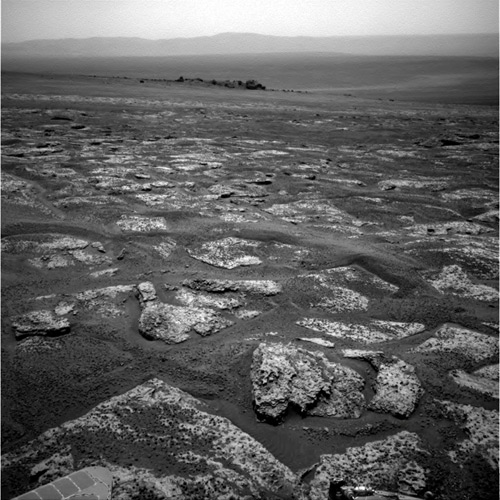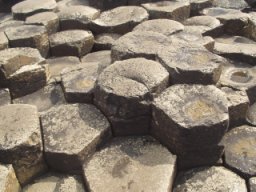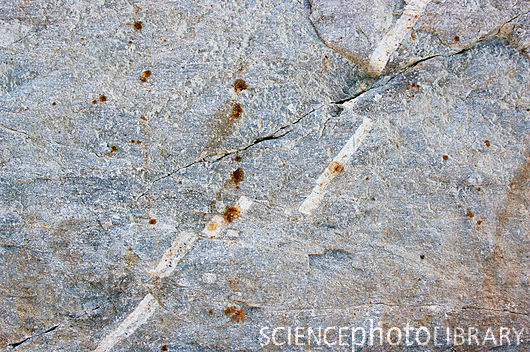It looks like you're using an Ad Blocker.
Please white-list or disable AboveTopSecret.com in your ad-blocking tool.
Thank you.
Some features of ATS will be disabled while you continue to use an ad-blocker.
share:
Originally posted by ProudBird
reply to post by -W1LL
The quote about Mars having been habitable to life either in the past, or possibly still (although underground) is simply that.
Life.
Not "intelligent" life...just, life. The Earth had life on it for between three to four billion years (or more) before any intelligence arose.
dont get your red marker out so quick I was meerly having fun and using my imagination.
who are we to say what intelligent life is, yes i know life has existed a long time longer than most scientists can Accurately count.
If this is remnants of something artificially constructed then those constructors must have been tiny. Are people aware of how small of a 'wall' is
being imagined here? Something that thin wouldn't support it's own weight of a roof over it. Alien construction IMO is ludicrous, reaching, and just
a wish of ancient Martian life or occupancy that never ever existed.
We see from orbiting Martian spacecraft what to some seem to be geometric artificial constructs kilometers across in size, and now tiny one inch wide geological mineral veins, and all of a sudden they were made by intelligent life maybe as tall as giants, or as small as crabs, its so funny to read this, 'anything is possible' crap. How come we find no bones? In fact how come we find zero organic compounds there? If there was ever life on Mars it shouldn't be hard to scrape up organic compound signatures. There simply isn't any there, and never was there.
We see from orbiting Martian spacecraft what to some seem to be geometric artificial constructs kilometers across in size, and now tiny one inch wide geological mineral veins, and all of a sudden they were made by intelligent life maybe as tall as giants, or as small as crabs, its so funny to read this, 'anything is possible' crap. How come we find no bones? In fact how come we find zero organic compounds there? If there was ever life on Mars it shouldn't be hard to scrape up organic compound signatures. There simply isn't any there, and never was there.
Is that a blue-white sky and mountains reflecting of the Rover?
Or is it my imagination?
Or is it my imagination?
Looks like they're finding some interesting geology at Endeavour Crater.
For example, how many square corners can you find in this recent rover image:

Here is the link to a high resolution version:
Source: marsrovers.jpl.nasa.gov...
This reminds me a little of the Giant's Causeway in Ireland

This was formed by volcanic processes.
For example, how many square corners can you find in this recent rover image:

Here is the link to a high resolution version:
Source: marsrovers.jpl.nasa.gov...
This reminds me a little of the Giant's Causeway in Ireland

This was formed by volcanic processes.
reply to post by RomaMayLi
It's in Portugal, in São Pedro de Moel beach, near Marinha Grande, some 100 km north of Lisbon.
It's in Portugal, in São Pedro de Moel beach, near Marinha Grande, some 100 km north of Lisbon.
He didn't know, but some people thought that there was land to the west of the Atlantic ocean.
Originally posted by Aestheteka
He wasn't expecting that continent because they didn't know it existed....
I agree.
As for the bricks, you say geology, I say archaeology, let's call the whole thing off
If this is a Vein as NASA would lead people to believe
My question where is the rest of the Rock that made that so called Vein!
there no Solid Rock Forming around the Vein like a Sandwich!!
All i see is tiny Compact Stone Rocks and Dirt nothing Solid to form a Vein as i see
like this Pic of quarts

My question where is the rest of the Rock that made that so called Vein!
there no Solid Rock Forming around the Vein like a Sandwich!!
All i see is tiny Compact Stone Rocks and Dirt nothing Solid to form a Vein as i see
like this Pic of quarts

edit on 7-11-2011 by Wolfenz because: forgot a pic
I wish it were more but I think it is just a natural rock layer.. what I really would like to see is something like the "glass tubes".. even if
the 'tubes' are natural I can't imagine a scientist that wouldn't want to study those up close!!!
reply to post by Aestheteka
no, no they haven't. Roman villas have roads, foundations, and bricks, not to mention similar structures better preserved to know that you found one.
This is a line of rocks. It looks like features one finds by rivers.
If they didn't want to create mindless drivel of civilizations on Mars, they wouldn't have released the photos.
no, no they haven't. Roman villas have roads, foundations, and bricks, not to mention similar structures better preserved to know that you found one.
This is a line of rocks. It looks like features one finds by rivers.
If they didn't want to create mindless drivel of civilizations on Mars, they wouldn't have released the photos.
I can't help but laugh...wondering what Hoagland will build the photos up to be. Another shopping mall on Mars
How long until we hear his drivel on C2C.....place your bets now folks.
Des
How long until we hear his drivel on C2C.....place your bets now folks.
Des
Originally posted by Aestheteka
I bet even Rover let out a "WTF?"
HAHA..thanks for the laugh..that made my morning!
Originally posted by Destinyone
I can't help but laugh...wondering what Hoagland will build the photos up to be. Another shopping mall on Mars
How long until we hear his drivel on C2C.....place your bets now folks.
Des
Yup! The EnterpriseMission.com still has the 'rabbit' (the little white piece in the landing crater in the first pictures) on there that was proven to be a piece of the lander!
One thing I notice, Hoagland will never admit if they make a mistake and they never update it on his website!
It used to be fairly interesting!
Originally posted by ArMaP
That's true, but we should some known basis for our speculation, or else we risk basing one or more theories in, for example, two unknown things, so we cannot know what happens when both change to an unexpected value, while if we do that with just an unknown we can speculate about what happens when it changes.
Originally posted by Aestheteka
But without speculation there is no science, no exploration
(I hope the above makes some sense, it sounds a little confusing to me)
Makes perfect sense to me. The essence of a "controlled experiment" is the methodical elimination of variables until you have isolated a single unknown. Then, after the experiment has been run, you can take the acquired data and scrutinize it for unexpected shifts or changes--and because of the controlled environment, you can be fairly positive that those changes are being caused by the isolated unknown....and thereby you can begin to construct a picture of its properties, making it a little less of an unknown.
Knowledge advances, and the angels sing, and all is right with the world.
Originally posted by intrptr
Another bit from that article gives me 2.5 billion reasons why they have suddenly found something new and exciting. In order to justify a lot more money for touring other planets. Pics are cool and all, just 2.5 billion for some photos?
Yep. 2.5 billion for some pics. Oh, and a small mountain of brand new scientific data that will keep teams of nerds occupied for the next 50 years and vastly expand our understanding of geology, solar and planetary formation, element dispersion, chemistry and metallurgy and....but I'm sure no one cares about that worthless crap.
Some crater is its objective? I bet some pie of precious metal ores is more like it. Then we can send a factory ship and begin mining operations, men even. Pollution of a whole other eco sphere can then begin in ernest.
Difficult to pollute an ecosystem that doesn't exist. I'm sure we'll have fun trying though. Maybe we'll bring one with us, and set it up in the area we're going to mine. Strip mine, of course. It just wouldn't be the same to be greedily leeching precious metals and gems out of the ground and not be killing everything in sight without care.
reply to post by Gorman91
yes, yes they have and yes, yes they do.
If a site is Listed (protected by English Heritage, for example) a 3D reconstruction can be made based on its soil and shadow marks (e.g. from LIDAR or aerial geodesics) as a dig must be officially sanctioned and there are still many sites awaiting financing to begin (or they were dug badly in the past by antiquarians, refilled and then listed).
Obviously, in the case of Roman structures the design can be based on extant structures or the remains of such but much of it is still guess work until certain artefacts (specific tiles, hypocaust, tesserae, bricks, internal/external plaster, etc) can be found in situ. This, however, is how much of the understanding of an undug site is worked out -
These can be clearly seen in this photo:
But no, roman villas are often discovered in the strangest of locations with little to no evidence other than a few tesserae which have been ploughed up, local legend or from aerial photography taken for a completely different reason (greenbelt development, etc)
My main question concerning the bricks on Mars photo is where is the IR photo of the region? LIDAR would show us exactly what is under the ground and in the surroundings and clear up this conundrum immediately. If it is a line of rocks it would show up as such and if it is part of a buried, ruined structure or other such artificial construct then this would show up also.
Here it is in practice -
Virtual 3D-Reconstruction
An important point being:
yes, yes they have and yes, yes they do.
If a site is Listed (protected by English Heritage, for example) a 3D reconstruction can be made based on its soil and shadow marks (e.g. from LIDAR or aerial geodesics) as a dig must be officially sanctioned and there are still many sites awaiting financing to begin (or they were dug badly in the past by antiquarians, refilled and then listed).
Obviously, in the case of Roman structures the design can be based on extant structures or the remains of such but much of it is still guess work until certain artefacts (specific tiles, hypocaust, tesserae, bricks, internal/external plaster, etc) can be found in situ. This, however, is how much of the understanding of an undug site is worked out -
Faint lines and color changes visible from the air are often invisible on the ground, and can be caused by buried cultural remains. Aerial archaeologists refer to these as crop, soil, and shadow marks. Crop marks form because there can be notiecable variations in crop vigor, color, or height when crops or natural vegetation grows over buried walls or other cultural remains. These are called 'negative' crop marks, as the crop is less vigorous due to the lack of moisture or root vigor caused by the buried walls. The opposite are 'positive' crop marks, where the crops are taller or more vigorous when growing over pits or post holes. There is more moisture and better root growth, so the crops grow better. These differences are heightened in times of crop stress, such as a drought. In the major French drought of 1976 thousands of new archaeological sites were discovered from the air. Soil differences also can be visible, such as where a road or ditch was filled in with soil from a different place. These are called 'soil' marks. Small variations in topography causing shadows that are visible early or late in the day, these are called 'shadow' marks.
These can be clearly seen in this photo:
But no, roman villas are often discovered in the strangest of locations with little to no evidence other than a few tesserae which have been ploughed up, local legend or from aerial photography taken for a completely different reason (greenbelt development, etc)
My main question concerning the bricks on Mars photo is where is the IR photo of the region? LIDAR would show us exactly what is under the ground and in the surroundings and clear up this conundrum immediately. If it is a line of rocks it would show up as such and if it is part of a buried, ruined structure or other such artificial construct then this would show up also.
Here it is in practice -
Virtual 3D-Reconstruction
An important point being:
On the way to a plausible and consistent reconstruction, a simulation of different solutions can be very helpful.
Originally posted by ProudBird
reply to post by -W1LL
The quote about Mars having been habitable to life either in the past, or possibly still (although underground) is simply that.
Life.
Not "intelligent" life...just, life. The Earth had life on it for between three to four billion years (or more) before any intelligence arose.
Yes. And I submit that it is not entirely certain that any intelligence has arisen here yet.
Originally posted by BRITWARRIOR
Originally posted by neo96
My problem with this is people are thinking like Earthlings so they project Earthling "engineering" on anything they see.
How many ways are there to build a bike? or a dam? or a road?
While the designs may very in style there is only one way to build them "that works" so yes in fact Aliens would use EXACTLY the same methods of building, enough for us to recognise,
I get what you are saying, and I agree that most purposeful constructions have certain archetype constraints.
But I think what Neo is trying to say is, what if the (hypothetical) ETs didn't build bikes, or dams, or roads? It is entirely conceivable that alien life will be exactly that---alien. So much so that we would fail to even recognize that we were in their presense at all.
For instance, we sit here debating whether the rock formation is natural, or some alien construct, when in fact the rock formation is the alien.
new topics
-
How To Spot Fake U.F.O. Photos
Aliens and UFOs: 10 hours ago
top topics
-
LA Mayor Bass Demanded $49M in Additional LAFD Cuts One Week Before Wildfires
Mainstream News: 16 hours ago, 17 flags -
Just Came Across These Unusual Old UFO Pics
Aliens and UFOs: 14 hours ago, 7 flags -
Scary video of face in an abandoned house
Paranormal Studies: 12 hours ago, 5 flags -
How To Spot Fake U.F.O. Photos
Aliens and UFOs: 10 hours ago, 5 flags -
Carry On!
Short Stories: 17 hours ago, 3 flags -
Sepultura - Territory - With New Drummer Greyson Nekrutman
Music: 17 hours ago, 3 flags
active topics
-
Trump says ownership of Greenland 'is an absolute necessity'
Other Current Events • 168 • : Lazy88 -
Oh, Good Gosh. “Kremlin Warns Stay Away from Greenland.”
World War Three • 35 • : Lazy88 -
Gravitic Propulsion--What IF the US and China Really Have it?
General Conspiracies • 40 • : Lazy88 -
Judge rules president-elect Donald Trump must be sentenced in 'hush money' trial
US Political Madness • 122 • : JadedGhost -
Fire insurance in LA withdrawn months ago
General Conspiracies • 39 • : Flyingclaydisk -
Los Angeles brush fires latest: 2 blazes threaten structures, prompt evacuations
Mainstream News • 395 • : Flyingclaydisk -
Archbisop Vigano Warns of Deep State and Deep Church
New World Order • 12 • : FlyersFan -
This should be plastered all over the airwaves
Mainstream News • 56 • : Flyingclaydisk -
How To Spot Fake U.F.O. Photos
Aliens and UFOs • 4 • : SteamyAmerican -
Just Came Across These Unusual Old UFO Pics
Aliens and UFOs • 6 • : NoCorruptionAllowed


